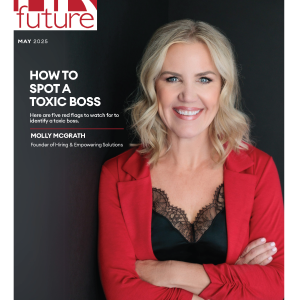In the whirlwind of the modern business landscape, safety can sometimes take a backseat to deadlines and deliverables. Yet, a safe workplace isn’t just a tick on a compliance checklist. It’s the foundation of a thriving, vibrant business culture.
For small and medium-sized businesses (SMBs), juggling multiple hats and tight budgets, the quest for safety might feel like a tall order. But here’s the good news: with a bit of commitment, creating a safe haven for your team is not just doable—it’s a breeze!
1. Understand The Importance of Safety
Before diving into the how-to, it’s essential to understand the why. A safe workplace,
Reduces Costs: Accidents can lead to medical expenses, legal fees, and increased insurance premiums, along with downtimes and reduced productivity, which can altogether weigh heavily on a business.
Boosts Morale: Employees who feel safe are happier, more productive, and less likely to leave. Knowing that their employer cares about them is often enough to keep them committed for the long run.
Enhanced Reputation: A good safety record can make your business more appealing to customers, partners, and potential employees, alike.
A focus on safety projects professionalism, because it seems only logical that an organization that goes to such extents to ensure the safety of its employees, will ensure just the same when it comes to partners, contractors, and customers.
2. Start With A Risk Assessment
Every workplace is unique, so it’s crucial to identify potential hazards specific to your environment. This doesn’t require hiring an expert. Simply walk around the premises, observe daily operations, and ask employees for their input. Common risks include:
- Slippery floors
- Poorly maintained equipment
- Improper storage of chemicals
- Inadequate lighting
Once identified, prioritize these risks based on their potential impact and likelihood, and start working towards handling them right away.
3. Implement Simple Safety Measures
Often, the most effective safety measures are also the simplest,
- Clear Clutter: Regularly clean and organize workspaces to prevent trips and falls.
- Signage: Use signs to indicate wet floors, high-voltage areas, or other potential hazards.
- Regular Maintenance: Ensure that all equipment is in good working order.
- Safety Gear: Provide necessary protective equipment like gloves, helmets, or safety glasses.
4. Train & Engage Your Team
Imagine a world where every team member is not just an employee but a safety ambassador. That’s the power of collective responsibility. Safety isn’t about a single person’s vigilance; it’s a symphony of many, all playing their part.
Interactive Sessions: Swap those dreary lectures for dynamic safety training sessions. Whether it’s a quick 15-minute pep talk over morning coffee or a hands-on demonstration, make it memorable. Dive into:
- Lift Like a Pro: Showcase the art of proper lifting techniques. Turn it into a fun challenge: Who can demonstrate the best posture?
- Exit Strategy: Run mock drills for emergency evacuations. Make it engaging with a hint of friendly competition: Which team can evacuate most efficiently?
- Gear Up: Host a ‘Safety Equipment Day’ where everyone gets hands-on experience with the tools that protect them. Think of it as a superhero gearing up!
If this too seems like too much of an effort, there are plenty of interactive safety training videos that you can consider. Such videos often feature the best practices for different industries, safety risks, and use cases, and thus offer great value for money.
Open Mic For Safety: Foster an environment where the mic is always open for safety discussions.
Encourage team members to be the eyes and ears on the ground. Whether they spot a loose wire or have an idea for a new safety protocol, their voice matters.
5. Foster A Safety-First Culture
In the grand tapestry of workplace culture, threads of safety and well-being intertwine to create a resilient, vibrant fabric.
It’s a culture where every individual knows they’re cherished, protected, and celebrated for making safe choices. In such a culture, safety doesn’t just live—it thrives.
- Beyond The Rulebook: While rules and regulations lay the groundwork, it’s the unwritten ethos of care that truly makes a difference. It’s about seeing safety not as a duty, but a devotion.
- Cheers To Safe Choices: Why wait for a year-end bonus when you can celebrate safety wins right now?
Recognize the employee who always ensures equipment is stored correctly or the one who champions break times to avoid fatigue. A simple ‘thank you’ or a token of appreciation can go a long way. - Milestones Matter: Celebrate the big and small. Did your team go a month without any accidents?
That calls for a celebration! Maybe it’s a team lunch, a special mention in the company newsletter, or even a fun badge for everyone’s desk. These moments of recognition reinforce the importance of safety.
6. Review & Revise
Think of safety as a living entity, evolving alongside your business. It’s not a static checklist but a dynamic dance. As your enterprise flourishes, new challenges may waltz in. Embrace a rhythm of regular reviews, fine-tuning your safety measures to the beat of your business’s growth. By staying vigilant and adaptive, you ensure that safety remains not just a priority, but a vibrant, ever-evolving partner in your business journey.
Conclusion
For small and medium-sized businesses, workplace safety might seem like a challenging endeavor. But with a proactive approach, it can be seamlessly integrated into daily operations.
Remember, safety isn’t just about avoiding accidents; it’s about creating a work environment where employees can thrive. By prioritizing safety, SMBs can protect their most valuable asset: their people.
HR Future Staff Writer.



























